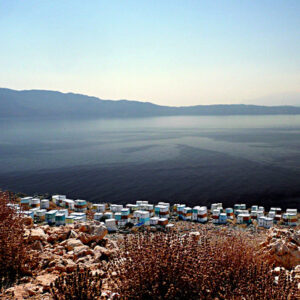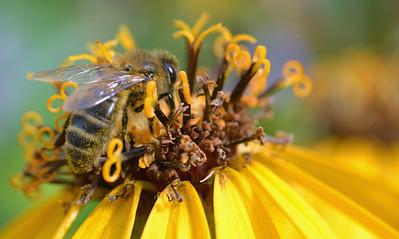Honey bees are one of nature’s hardest workers and play a vital role in pollinating plants and producing honey. But have you ever wondered exactly how many bees are needed to produce just 1kg of honey? Producing that amount takes a significant collaborative effort from thousands of bees.

The Honey Making Process
To understand how many bees it takes, we first need to discuss the process of honey making. Honey bees collect nectar from flowering plants and flowers using their specialized proboscis or tongue. They carry this nectar back to the beehive where they pass it to other worker bees. These bees then break down the nectar into simpler sugars like glucose and fructose through enzymatic processes in their digestive tracts.
The worker bees then deposit the partially digested nectar into honeycomb cells built from beeswax. Other bees fan their wings over the cells to evaporate excess water from the nectar through transpiration, concentrating the sugars and transforming it into honey. The honey is then sealed with more beeswax to prevent fermentation.

Estimating the Bee Numbers
On average, a healthy beehive with about 60,000 worker bees can produce around 34kg of honey in a season if conditions are favorable. The division is fairly straightforward – to make 1kg of honey it would require around 1,750 bees (60,000 bees / 34kg).

However, this is an estimate as productivity can vary depending on factors like weather, plant nectar availability, hive health, and the beekeeper’s management techniques. Some experts suggest the number could be as high as 2,000-5,000 bees to produce 1kg of honey. That’s because not all bees participate directly in nectar collection or ripening – some have roles within the hive like caring for the queen, young bees, and hive maintenance.
What do experts say?
- Dr. Samuel Ramsey, Associate Professor of Entomology at University of Florida. Dr. Ramsey has conducted extensive research on honey bee biology, health, and hive productivity. He notes that not all bees focus solely on nectar tasks, with some dedicating time to in-hive work like brood care, ventilation, and cleaning. Based on time allocation studies, he estimates around 20-30% of bees may not contribute directly to nectar handling. Factoring this in, he calculates the range could be higher at around 2,000-3,000 bees per 1kg.
- Thomas Seeley, Professor of Neuroscience at Cornell University and renowned honey bee researcher. In his book “Honeybee Democracy”, Seeley cites hive efficiency studies that found only about 2/3 of bees were observed carrying nectar at any given time. Accounting for non-foraging bees, he argues the number is realistically closer to 3,000-5,000 bees to produce 1kg of honey.
- Dr. Samuel Wong, Apiarist and Researcher at the International Bee Research Association (IBRA). Through analyzing time-lapse footage of hives over whole seasons, Dr. Wong determined roughly 30-40% of bees were engaged in in-hive tasks daily rather than foraging. He concludes based on his observations and colony metabolism modeling that around 2,000-4,000 bees coordinating their labor would be necessary to vigorously collect and process 1kg of honey.

In any case, it’s clear a significant team effort and collaboration between thousands of worker bees is needed to produce even modest amounts of honey through their highly coordinated nectar collection, digestion, fanning and cell building processes. Honey bees exemplify the power of community and teamwork.
In conclusion, while estimates vary, most experts agree it takes somewhere between 1,750-5,000 honey bees working together in a healthy beehive to produce 1 kilogram of the sweet golden honey we enjoy. Their collective work is nothing short of remarkable.
